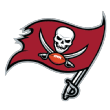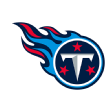Can your team afford to go after a star player in free agency or will it be forced to settle for the bargain bin? Our NFL Nation reporters take a peek at the salary-cap situations of all 32 teams, rating them on a scale of 1-5 -- one being very little flexibility and five being a lot of room to make moves. Here are the results.
5: A lot of flexibility
 Chicago Bears: The Bears rank near the top of the NFL in projected cap space for 2016. With an estimated $55 million-plus worth of room, look for general manager Ryan Pace to spread out his resources. Pace's approach is to sign multiple free agents to modest deals, like the Bears did with Pernell McPhee, Eddie Royal and Antrel Rolle last year. Keep in mind, right tackle Kyle Long is now eligible for a lucrative extension and the Bears still have to negotiate a long-term deal with wide receiver Alshon Jeffery. At worst, the team will place the franchise tag on Jeffery, which would eat up more than $14 million worth of salary-cap space alone. Bottom line: The Bears are not expected to spend all of their available money on free agents, but Chicago should be active in March. -- Jeff Dickerson
Chicago Bears: The Bears rank near the top of the NFL in projected cap space for 2016. With an estimated $55 million-plus worth of room, look for general manager Ryan Pace to spread out his resources. Pace's approach is to sign multiple free agents to modest deals, like the Bears did with Pernell McPhee, Eddie Royal and Antrel Rolle last year. Keep in mind, right tackle Kyle Long is now eligible for a lucrative extension and the Bears still have to negotiate a long-term deal with wide receiver Alshon Jeffery. At worst, the team will place the franchise tag on Jeffery, which would eat up more than $14 million worth of salary-cap space alone. Bottom line: The Bears are not expected to spend all of their available money on free agents, but Chicago should be active in March. -- Jeff Dickerson
 Jacksonville Jaguars: The Jaguars are projected to have the most cap space available in the league (about $74 million). That's good for a team that needs to rebuild its defense and is expected to be aggressive in free agency. There aren't likely to be any elite players available, but the Jaguars have enough money to land several front-line starters. -- Mike DiRocco
Jacksonville Jaguars: The Jaguars are projected to have the most cap space available in the league (about $74 million). That's good for a team that needs to rebuild its defense and is expected to be aggressive in free agency. There aren't likely to be any elite players available, but the Jaguars have enough money to land several front-line starters. -- Mike DiRocco
 Los Angeles Rams: The Rams were already in good position before last week's release of veterans Chris Long, James Laurinaitis and Jared Cook. Now, they'll enter the offseason with enough space to retain most of their key free agents and be active in pursuing outside options on the open market should they choose to do so. -- Nick Wagoner
Los Angeles Rams: The Rams were already in good position before last week's release of veterans Chris Long, James Laurinaitis and Jared Cook. Now, they'll enter the offseason with enough space to retain most of their key free agents and be active in pursuing outside options on the open market should they choose to do so. -- Nick Wagoner
 New York Giants: The Giants are among the top teams in cap space, projecting somewhere in the high $50 millions. They have a lot of needs, but they locked up quarterback Eli Manning last offseason and don't have to pay Odell Beckham Jr. big money until 2018 at the earliest. So they shouldn't need to deal with any real backbreaking expenditures, even as they continue with their extensive roster rebuild. They should be able to stretch a bit if it makes a difference for a free agent or two they really like without having to worry about it costing them a chance at another one down the line. -- Dan Graziano
New York Giants: The Giants are among the top teams in cap space, projecting somewhere in the high $50 millions. They have a lot of needs, but they locked up quarterback Eli Manning last offseason and don't have to pay Odell Beckham Jr. big money until 2018 at the earliest. So they shouldn't need to deal with any real backbreaking expenditures, even as they continue with their extensive roster rebuild. They should be able to stretch a bit if it makes a difference for a free agent or two they really like without having to worry about it costing them a chance at another one down the line. -- Dan Graziano
 Oakland Raiders: The Raiders being in "salary-cap hell" due to a lot of "out-of-whack" contracts, per general manager Reggie McKenzie, seems like a lifetime ago. Oakland projects to have the second-most cap room in the league (north of $70 million), as it's starting to look like a legit up-and-coming club. The Raiders' signing a one-year lease to remain in Oakland (with two one-year options) also should make the team more attractive to interested free agents, given they have an idea where home will be for the foreseeable future. -- Paul Gutierrez
Oakland Raiders: The Raiders being in "salary-cap hell" due to a lot of "out-of-whack" contracts, per general manager Reggie McKenzie, seems like a lifetime ago. Oakland projects to have the second-most cap room in the league (north of $70 million), as it's starting to look like a legit up-and-coming club. The Raiders' signing a one-year lease to remain in Oakland (with two one-year options) also should make the team more attractive to interested free agents, given they have an idea where home will be for the foreseeable future. -- Paul Gutierrez
 San Francisco 49ers: The 49ers would rather you -- and interested free agents -- forget last year's failed experiment with Jim Tomsula and get on board with Chip Kelly. With more than $55 million in cap room and a state-of-the-art facility to call home (we'll get to those grass issues at Levi's Stadium at a later date), the Niners are expected to be big players in free agency. That's good news for general manager Trent Baalke, who has admitted he has some making up to do for last year's poor free-agent class. The question: Do free agents have short memories and will they want to play for Kelly, who turned off a lot of people in Philadelphia? -- Paul Gutierrez
San Francisco 49ers: The 49ers would rather you -- and interested free agents -- forget last year's failed experiment with Jim Tomsula and get on board with Chip Kelly. With more than $55 million in cap room and a state-of-the-art facility to call home (we'll get to those grass issues at Levi's Stadium at a later date), the Niners are expected to be big players in free agency. That's good news for general manager Trent Baalke, who has admitted he has some making up to do for last year's poor free-agent class. The question: Do free agents have short memories and will they want to play for Kelly, who turned off a lot of people in Philadelphia? -- Paul Gutierrez
 Tampa Bay Buccaneers: The Bucs are one of seven teams projected to have more than $50 million in cap space, though that number could fluctuate a bit depending on what they decide to do with WR Vincent Jackson and RB Doug Martin. Jackson's 2016 cap number is $12.2 million, and the Bucs would save nearly $10 million in cap room by letting him go. As for Martin, the Bucs may give him the franchise tag or re-sign him. Even if they do, Tampa should have plenty of space available to make a run at several marquee free agents. -- Mike DiRocco
Tampa Bay Buccaneers: The Bucs are one of seven teams projected to have more than $50 million in cap space, though that number could fluctuate a bit depending on what they decide to do with WR Vincent Jackson and RB Doug Martin. Jackson's 2016 cap number is $12.2 million, and the Bucs would save nearly $10 million in cap room by letting him go. As for Martin, the Bucs may give him the franchise tag or re-sign him. Even if they do, Tampa should have plenty of space available to make a run at several marquee free agents. -- Mike DiRocco
4: Above average
 Atlanta Falcons: The Falcons are middle of the pack right now in terms of cap room (about $27 million), but when they release nose tackle Paul Soliai after the new league year begins (March 9), they'll jump up near the top third of the league. Not to mention, the Falcons could part ways with or restructure the contracts of other veterans to free up more cap space before the free-agent period begins. -- Vaughn McClure
Atlanta Falcons: The Falcons are middle of the pack right now in terms of cap room (about $27 million), but when they release nose tackle Paul Soliai after the new league year begins (March 9), they'll jump up near the top third of the league. Not to mention, the Falcons could part ways with or restructure the contracts of other veterans to free up more cap space before the free-agent period begins. -- Vaughn McClure
 Cincinnati Bengals: Cincinnati's cap situation remains favorable with estimates putting the Bengals at about $37 million in available space. That's good news for a team that will ultimately spend close to its limit making a run at free agents such as Marvin Jones, George Iloka and Vincent Rey -- key veterans who could command top dollar on the open market next month. The flexibility to sign a few of their most important unrestricted free agents certainly is there, but the Bengals definitely can't expect to re-sign all 15. -- Coley Harvey
Cincinnati Bengals: Cincinnati's cap situation remains favorable with estimates putting the Bengals at about $37 million in available space. That's good news for a team that will ultimately spend close to its limit making a run at free agents such as Marvin Jones, George Iloka and Vincent Rey -- key veterans who could command top dollar on the open market next month. The flexibility to sign a few of their most important unrestricted free agents certainly is there, but the Bengals definitely can't expect to re-sign all 15. -- Coley Harvey
 Cleveland Browns: The Browns again are in good cap shape with about $40 million, according to projections. But that does not take into account the move the team will make with Johnny Manziel, which will eat away $1 million. How the Browns use the space will be interesting. In the past they haven't spent a lot, and when they did splurge, they did not always do so wisely. -- Pat McManamon
Cleveland Browns: The Browns again are in good cap shape with about $40 million, according to projections. But that does not take into account the move the team will make with Johnny Manziel, which will eat away $1 million. How the Browns use the space will be interesting. In the past they haven't spent a lot, and when they did splurge, they did not always do so wisely. -- Pat McManamon
 Detroit Lions: Detroit's cap space is about average right now, but that figure does not take into account the $11.1 million in relief they'd get if Calvin Johnson retires, as many suspect he will. So the Lions will have a lot of room to maneuver during free agency if they so choose -- a marked departure from years past when they could really make a run at only one big free agent and one midrange free agent before the cap became an issue. -- Michael Rothstein
Detroit Lions: Detroit's cap space is about average right now, but that figure does not take into account the $11.1 million in relief they'd get if Calvin Johnson retires, as many suspect he will. So the Lions will have a lot of room to maneuver during free agency if they so choose -- a marked departure from years past when they could really make a run at only one big free agent and one midrange free agent before the cap became an issue. -- Michael Rothstein
 Houston Texans: The Texans should be well-positioned in terms of salary cap space, especially after making some cap-saving moves. They'd also save about $7 million by releasing Arian Foster; $2.3 million by releasing Rahim Moore, who should be allowed to seek opportunities elsewhere; and another $2.4 million by releasing Garrett Graham, who was inactive once the Texans had two other healthy tight ends. Those are some obvious potential moves, but many more could follow and give the Texans some good financial flexibility heading into free agency. -- Tania Ganguli
Houston Texans: The Texans should be well-positioned in terms of salary cap space, especially after making some cap-saving moves. They'd also save about $7 million by releasing Arian Foster; $2.3 million by releasing Rahim Moore, who should be allowed to seek opportunities elsewhere; and another $2.4 million by releasing Garrett Graham, who was inactive once the Texans had two other healthy tight ends. Those are some obvious potential moves, but many more could follow and give the Texans some good financial flexibility heading into free agency. -- Tania Ganguli
 Kansas City Chiefs: The Chiefs are currently projected to have about $31.5 million in available cap space, which puts them in the top half of the NFL's 32 teams. But the Chiefs have several significant players who are potential unrestricted free agents, including safety Eric Berry, so their available cap room could dwindle by the time the free-agent signing period begins. -- Adam Teicher
Kansas City Chiefs: The Chiefs are currently projected to have about $31.5 million in available cap space, which puts them in the top half of the NFL's 32 teams. But the Chiefs have several significant players who are potential unrestricted free agents, including safety Eric Berry, so their available cap room could dwindle by the time the free-agent signing period begins. -- Adam Teicher
 Minnesota Vikings: The Vikings currently rank in the middle of the league in cap space, but they can quickly create more by releasing or restructuring the contracts of a couple high-priced veterans. Rob Brzezinski has kept Minnesota in strong cap shape for years with the team's pay-as-you-go approach, and the Vikings are currently benefiting from one of the league's lowest cap charges at quarterback, where Teddy Bridgewater is on his rookie contract. -- Ben Goessling
Minnesota Vikings: The Vikings currently rank in the middle of the league in cap space, but they can quickly create more by releasing or restructuring the contracts of a couple high-priced veterans. Rob Brzezinski has kept Minnesota in strong cap shape for years with the team's pay-as-you-go approach, and the Vikings are currently benefiting from one of the league's lowest cap charges at quarterback, where Teddy Bridgewater is on his rookie contract. -- Ben Goessling
 San Diego Chargers: The Chargers have more than enough room (about $30 million based on projections) to sign their own players expected to hit free agency, including tight end Antonio Gates and cornerback Patrick Robinson. They'll also have the ability to fill potential team needs in the open market at safety, defensive line, center and receiver. -- Eric D. Williams
San Diego Chargers: The Chargers have more than enough room (about $30 million based on projections) to sign their own players expected to hit free agency, including tight end Antonio Gates and cornerback Patrick Robinson. They'll also have the ability to fill potential team needs in the open market at safety, defensive line, center and receiver. -- Eric D. Williams
 Tennessee Titans: Tennessee has a great deal of flexibility, with about $47 million in projected space. It doesn't mean Jon Robinson will spend wildly, but the Titans should pick their spots and be willing to shell out for a player they like. Overpaying isn't the crime. Overpaying a non-producer is. The Titans need way more help than a draft class will provide and have to be smart shoppers. -- Paul Kuharsky
Tennessee Titans: Tennessee has a great deal of flexibility, with about $47 million in projected space. It doesn't mean Jon Robinson will spend wildly, but the Titans should pick their spots and be willing to shell out for a player they like. Overpaying isn't the crime. Overpaying a non-producer is. The Titans need way more help than a draft class will provide and have to be smart shoppers. -- Paul Kuharsky
3: Average
 Arizona Cardinals: Arizona has more than enough cap space to make a run at one or two top-tier free agents. They tend to focus on one big-name, big-ticket player who fills a significant role. That could be a pass-rusher or cornerback this year. -- Josh Weinfuss
Arizona Cardinals: Arizona has more than enough cap space to make a run at one or two top-tier free agents. They tend to focus on one big-name, big-ticket player who fills a significant role. That could be a pass-rusher or cornerback this year. -- Josh Weinfuss
 Carolina Panthers: The Panthers have gone from shopping at the Dollar Store, as general manager Dave Gettleman said a couple of years ago, to at least a midlevel department store with about $27 million in projected cap space after the retirement of defensive end Jared Allen. Some of that will go to signing draft picks, and Gettleman likes to keep about $5 million in reserve going into training camp for emergency signings. Cornerback Josh Norman will eat up between $10 million and $14 million of this total, depending on whether he signs a long-term deal or is given the franchise tag. (The tag would count about $13.7 million.) The Panthers also would like to sign defensive tackle Kawann Short to a long-term deal, so look for adjustments to be made on other deals if that is to happen. -- David Newton
Carolina Panthers: The Panthers have gone from shopping at the Dollar Store, as general manager Dave Gettleman said a couple of years ago, to at least a midlevel department store with about $27 million in projected cap space after the retirement of defensive end Jared Allen. Some of that will go to signing draft picks, and Gettleman likes to keep about $5 million in reserve going into training camp for emergency signings. Cornerback Josh Norman will eat up between $10 million and $14 million of this total, depending on whether he signs a long-term deal or is given the franchise tag. (The tag would count about $13.7 million.) The Panthers also would like to sign defensive tackle Kawann Short to a long-term deal, so look for adjustments to be made on other deals if that is to happen. -- David Newton
 Dallas Cowboys: The Cowboys will be roughly $13 million under the 2016 cap once it is set, which puts them in the bottom third in the league. So why did I rate them among the teams with average cap flexibility? With the swipe of a pen, the Cowboys can have as much as $34-35 million in space. Dallas will be able to restructure the contracts of Tyron Smith and Tyrone Crawford, which could create nearly $12 million in room. Cutting Brandon Carr would result in as little as $6.4 million or as much as $9.1 million in savings depending on the route they go. What Dallas almost assuredly won't do is restructure the contracts of Dez Bryant and Tony Romo. When free agency begins the Cowboys will be able to do whatever they want to do. They will not be hamstrung by the cap. -- Todd Archer
Dallas Cowboys: The Cowboys will be roughly $13 million under the 2016 cap once it is set, which puts them in the bottom third in the league. So why did I rate them among the teams with average cap flexibility? With the swipe of a pen, the Cowboys can have as much as $34-35 million in space. Dallas will be able to restructure the contracts of Tyron Smith and Tyrone Crawford, which could create nearly $12 million in room. Cutting Brandon Carr would result in as little as $6.4 million or as much as $9.1 million in savings depending on the route they go. What Dallas almost assuredly won't do is restructure the contracts of Dez Bryant and Tony Romo. When free agency begins the Cowboys will be able to do whatever they want to do. They will not be hamstrung by the cap. -- Todd Archer
 Denver Broncos: The Broncos have been one of the best teams in the league at avoiding dead money, salary cap charges for players no longer on the roster. That number currently sits at just $900,000 for 2016, which is why I rated them as average, despite the fact that they're currently in the bottom third of the league in cap room. With a dead money figure so low, they can shed more contracts if needed without much worry. Plus, should Peyton Manning retire, they'll gain another $19 million worth of cap space, giving them a little more room to retain some of their big-name free agents. -- Jeff Legwold
Denver Broncos: The Broncos have been one of the best teams in the league at avoiding dead money, salary cap charges for players no longer on the roster. That number currently sits at just $900,000 for 2016, which is why I rated them as average, despite the fact that they're currently in the bottom third of the league in cap room. With a dead money figure so low, they can shed more contracts if needed without much worry. Plus, should Peyton Manning retire, they'll gain another $19 million worth of cap space, giving them a little more room to retain some of their big-name free agents. -- Jeff Legwold
 Green Bay Packers: The Packers haven't been in salary-cap hell for years in large part because general manager Ted Thompson isn't a big player in the unrestricted free-agent market and because contract negotiator Russ Ball has continued Andrew Brandt's way of structuring contracts in a cap-friendly way. The Packers should have more than $20 million in available cap space when the new league year starts next month. That should be plenty to re-sign some of their own free agents, while still leaving some room in the unlikely event Thompson decides to make a play for someone on the street. -- Rob Demovsky
Green Bay Packers: The Packers haven't been in salary-cap hell for years in large part because general manager Ted Thompson isn't a big player in the unrestricted free-agent market and because contract negotiator Russ Ball has continued Andrew Brandt's way of structuring contracts in a cap-friendly way. The Packers should have more than $20 million in available cap space when the new league year starts next month. That should be plenty to re-sign some of their own free agents, while still leaving some room in the unlikely event Thompson decides to make a play for someone on the street. -- Rob Demovsky
 Philadelphia Eagles: Eagles executive VP Howie Roseman, who manages the salary cap, has said that the team's cap isn't in the kind of shape he'd like it to be after Chip Kelly's year of spending dangerously. Roseman can tighten things up, but the Eagles have the flexibility to do what they need to do. -- Phil Sheridan
Philadelphia Eagles: Eagles executive VP Howie Roseman, who manages the salary cap, has said that the team's cap isn't in the kind of shape he'd like it to be after Chip Kelly's year of spending dangerously. Roseman can tighten things up, but the Eagles have the flexibility to do what they need to do. -- Phil Sheridan
 Seattle Seahawks: The Seahawks are in the middle of the pack in terms of cap space and will get additional room ($6.5 million) when running back Marshawn Lynch officially retires. They have done an excellent job of keeping their core in place while maintaining the flexibility to extend players and make moves in free agency. -- Sheil Kapadia
Seattle Seahawks: The Seahawks are in the middle of the pack in terms of cap space and will get additional room ($6.5 million) when running back Marshawn Lynch officially retires. They have done an excellent job of keeping their core in place while maintaining the flexibility to extend players and make moves in free agency. -- Sheil Kapadia
2: Below average
 Baltimore Ravens: The Ravens have the second-worst cap situation right now, but they should be in a little better spot once free agency begins. The key is restructuring quarterback Joe Flacco's contract to reduce his $28.55 million cap number. That could potentially create $9 million in space. The sides are expected to begin talks this week at the NFL combine in Indianapolis. The Ravens can free up an additional $6.1 million if they release defensive end Chris Canty, linebacker Daryl Smith and cornerback Kyle Arrington. Baltimore is typically not a big spender in free agency, but the cap room can help the team add a veteran cornerback or pass-rusher and retain some of its own free agents. -- Jamison Hensley
Baltimore Ravens: The Ravens have the second-worst cap situation right now, but they should be in a little better spot once free agency begins. The key is restructuring quarterback Joe Flacco's contract to reduce his $28.55 million cap number. That could potentially create $9 million in space. The sides are expected to begin talks this week at the NFL combine in Indianapolis. The Ravens can free up an additional $6.1 million if they release defensive end Chris Canty, linebacker Daryl Smith and cornerback Kyle Arrington. Baltimore is typically not a big spender in free agency, but the cap room can help the team add a veteran cornerback or pass-rusher and retain some of its own free agents. -- Jamison Hensley
 Buffalo Bills: The Bills currently have the NFL's least projected cap space and were the only team over the projected cap for next season. But I don't think a 1 would be appropriate in this case because they will likely release Mario Williams, whose $19.9 million cap hit wasn't anywhere near in line with his production last season. The resulting $12.9 million savings and some other contract tinkering will give the Bills a small amount of wiggle room. Still, their cap flexibility will remain considerably below the NFL average. -- Mike Rodak
Buffalo Bills: The Bills currently have the NFL's least projected cap space and were the only team over the projected cap for next season. But I don't think a 1 would be appropriate in this case because they will likely release Mario Williams, whose $19.9 million cap hit wasn't anywhere near in line with his production last season. The resulting $12.9 million savings and some other contract tinkering will give the Bills a small amount of wiggle room. Still, their cap flexibility will remain considerably below the NFL average. -- Mike Rodak
 Indianapolis Colts: The Colts are in the bottom half of the NFL when it comes to cap space. That doesn't sit well for a team that has a number of different areas they need to address during the offseason, including linebacker and offensive line. Owner Jim Irsay already has said they plan to focus on re-signing their own free agents and that they will not be big spenders on the outside market once free agency starts next month. -- Mike Wells
Indianapolis Colts: The Colts are in the bottom half of the NFL when it comes to cap space. That doesn't sit well for a team that has a number of different areas they need to address during the offseason, including linebacker and offensive line. Owner Jim Irsay already has said they plan to focus on re-signing their own free agents and that they will not be big spenders on the outside market once free agency starts next month. -- Mike Wells
 Miami Dolphins: The Dolphins earned the label of "offseason champions" in recent years with big free-agent additions such as Ndamukong Suh, Mike Wallace and Branden Albert. But don't expect Miami to continue that trend in 2016. The team currently is tight against the cap. After releasing and restructuring several contracts (most notably Suh's $28.6 million cap hit in 2016), Miami's cap-room grade will improve from dire to below average. -- James Walker
Miami Dolphins: The Dolphins earned the label of "offseason champions" in recent years with big free-agent additions such as Ndamukong Suh, Mike Wallace and Branden Albert. But don't expect Miami to continue that trend in 2016. The team currently is tight against the cap. After releasing and restructuring several contracts (most notably Suh's $28.6 million cap hit in 2016), Miami's cap-room grade will improve from dire to below average. -- James Walker
 New England Patriots: The Patriots will make some financial tweaks to give themselves the flexibility they need, so it's not as though they have financial handcuffs that will limit their ability to make moves. But it's not as plentiful as other teams. A big part of their plan will be to extend contracts of players already on the roster -- mainly the big four of Dont'a Hightower, Chandler Jones, Jamie Collins and Malcolm Butler -- which is part of their cap planning. -- Mike Reiss
New England Patriots: The Patriots will make some financial tweaks to give themselves the flexibility they need, so it's not as though they have financial handcuffs that will limit their ability to make moves. But it's not as plentiful as other teams. A big part of their plan will be to extend contracts of players already on the roster -- mainly the big four of Dont'a Hightower, Chandler Jones, Jamie Collins and Malcolm Butler -- which is part of their cap planning. -- Mike Reiss
 New York Jets: One year removed from an offseason spending spree, the Jets sit roughly 22nd in estimated cap space after saving $8 million by releasing CB Antonio Cromartie. It's a concern, considering they have three big-ticket players they'd like to keep: Muhammad Wilkerson (likely franchise tag), Ryan Fitzpatrick and Damon Harrison. There could be more cuts, and they likely will restructure a contract or two. No matter what happens, it'll be a tight squeeze. -- Rich Cimini
New York Jets: One year removed from an offseason spending spree, the Jets sit roughly 22nd in estimated cap space after saving $8 million by releasing CB Antonio Cromartie. It's a concern, considering they have three big-ticket players they'd like to keep: Muhammad Wilkerson (likely franchise tag), Ryan Fitzpatrick and Damon Harrison. There could be more cuts, and they likely will restructure a contract or two. No matter what happens, it'll be a tight squeeze. -- Rich Cimini
 Pittsburgh Steelers: The Steelers were pressed against the cap ceiling for years, and though they are still in the league's bottom third in cap space, they should have enough to re-sign a few key in-house free agents, none of whom is considered a big-money player in the open market. Pittsburgh can create more room if necessary too. The Steelers can't afford to be major players in free agency, but that's not their style, anyway. -- Jeremy Fowler
Pittsburgh Steelers: The Steelers were pressed against the cap ceiling for years, and though they are still in the league's bottom third in cap space, they should have enough to re-sign a few key in-house free agents, none of whom is considered a big-money player in the open market. Pittsburgh can create more room if necessary too. The Steelers can't afford to be major players in free agency, but that's not their style, anyway. -- Jeremy Fowler
 Washington Redskins: The Redskins have approximately $10 million to $13 million in cap space. They can free up more cash with several moves and bump themselves up to a 3, so it's not as if they're without flexibility. The Redskins will gain $16.15 million in cap space when they part ways with quarterback Robert Griffin III, but that money will be used up by whatever deal quarterback Kirk Cousins ultimately receives. So while they can create more room, they'll still be more restricted than most teams. -- John Keim
Washington Redskins: The Redskins have approximately $10 million to $13 million in cap space. They can free up more cash with several moves and bump themselves up to a 3, so it's not as if they're without flexibility. The Redskins will gain $16.15 million in cap space when they part ways with quarterback Robert Griffin III, but that money will be used up by whatever deal quarterback Kirk Cousins ultimately receives. So while they can create more room, they'll still be more restricted than most teams. -- John Keim
1: Very little
 New Orleans Saints: The Saints actually aren't in horrible shape this year, given that the NFL's cap figure keeps skyrocketing. They're already a few million dollars under the projected cap even before working out a new cap-friendly extension with Drew Brees. However, New Orleans deserves this rating compared to the rest of the league because it will have more than $25 million on its cap from players who are no longer on the roster. That's a costly waste of resources. -- Mike Triplett
New Orleans Saints: The Saints actually aren't in horrible shape this year, given that the NFL's cap figure keeps skyrocketing. They're already a few million dollars under the projected cap even before working out a new cap-friendly extension with Drew Brees. However, New Orleans deserves this rating compared to the rest of the league because it will have more than $25 million on its cap from players who are no longer on the roster. That's a costly waste of resources. -- Mike Triplett
